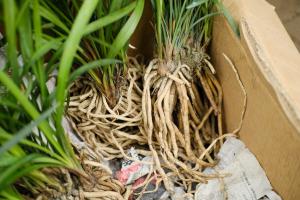How Much Light Does an Aloe Plant Need
Aloe plants are popular succulents that are easy to care for both indoors and outdoors. However, one of the key factors in keeping them thriving is ensuring they receive the appropriate amount of light. In this article, we will discuss the factors that affect an aloe plant's lighting needs and how to provide the best environment for your aloe.
Factors Affecting Aloe Plant's Lighting Needs
Aloe plants are native to arid regions in Africa, and they have adapted to periods of intense sun and then shade. These species can thrive in a wide range of lighting conditions, although they prefer bright, indirect light.
The amount of light an aloe plant needs depends on several factors, including the species, size of the plant, season, and location.
For example, aloe vera prefers indirect sunlight, while other species of aloe can handle more direct sunlight. The size of your aloe plant also affects its lighting needs, as larger plants require more light than smaller ones. Additionally, during the growing season, aloe plants need more light to support their growth, and in winter, they require less light to survive.
The location of your aloe plant plays a role in its lighting needs, as well. If you place an aloe plant near a window, it may receive too much direct sunlight, which could damage the plant. On the other hand, if your aloe plant is positioned too far away from a window, it may not receive enough light to thrive.
Providing the Right Amount of Light for Your Aloe Plant
To ensure your aloe plant receives the right amount of light, it's essential to monitor its environment and adjust accordingly.
For indoor aloe plants, it is best to place them near a window with bright, indirect light. However, be sure to adjust the plant's location throughout the year to account for changes in the sun's position and intensity. If your plant is receiving too much direct light, consider moving it to an area with less exposure, or use a sheer curtain to help diffuse the light.
For outdoor aloe plants, it's essential to position them in an area with partial shade. In the summer, when temperatures are high, it's best to keep them in a shaded area throughout the day. In the winter, aloe plants can tolerate more direct sunlight, but still, need to be protected from excessive exposure.
To maintain a healthy aloe plant, it's important to ensure it receives the right amount of light. Remember that different species of aloe have different lighting needs, and the amount of light needed may vary seasonally. By monitoring your aloe plant's environment and adjusting as needed, you can provide the right amount of light for a healthy and vibrant plant.

 how many times do yo...
how many times do yo... how many planted tre...
how many planted tre... how many pine trees ...
how many pine trees ... how many pecan trees...
how many pecan trees... how many plants comp...
how many plants comp... how many plants can ...
how many plants can ... how many plants and ...
how many plants and ... how many pepper plan...
how many pepper plan...
































